Herding dogs all over the world are doing what they’re bred to do. They gather, herd, and protect livestock; these are all jobs they’ve done since ancient times.
However, there’s a lot more to herding dogs that you may not know. Today, some of these dogs such as the German Shepherd excel at police and protection work.
Other’s such as the Border Collie are experts at competitive dog sports and performance events.
Herding dogs are known for their loyalty and intelligence, and they’re also highly sought after as watchdogs, house dogs, and companions. This breed is specially bred to round up livestock, find strays, and to relocate herd animals from one grazing spot to another.
It is hard-wired in their DNA to relentlessly stalk and chase. Unfortunately, herding dogs do not adapt well to an unchallenging lifestyle, because of their high working drive and abundant energy.
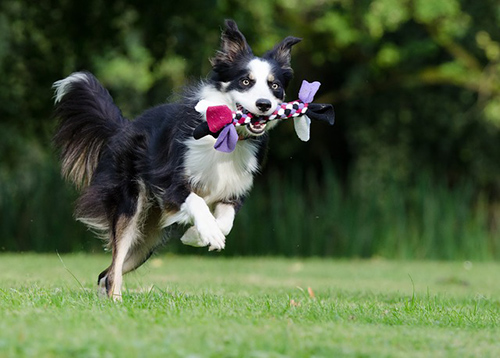
Barking, heel nipping, and nudging are all normal behavior associated with this breed; however, some owners may see it as a problem in a house pet.
They’re one hundred and ninety-eight dog breeds in seven groups, which also include a different class that incorporates new breeds almost every year. Selecting a new breed can be overwhelming to many potential owners; however, it can be exciting as well.
That is why it is essential to gain a good understanding of the different characteristics of each group to get your perfect purebred dog. Many owners already have a good understanding of what they want in a companion dog.
For instance, if you’re a jogger and want a dog that can keep up with you; it would be a good idea to look at sporting breeds and some hound breeds.
Please stay away from the Toy Breeds and the Non-Sporting Breeds. However, if you’re into the fashionable, head turning, but a less active pet, then the Toy and Non-Sporting Group Breeds would be ideal.
Characteristics of Herding Dogs
These days, you would not find too many people that keep sheep and cattle. However, the breed can care less. According to the herding dogs characteristics, they are intelligent and highly versatile and have made their mark in today’s world as drug-detection dogs, search and rescue dogs, movie stars, and police dogs. For the most part, many of these dogs will serve as pets, and some in this group will be happy to fill that role.
The sheepdog’s job is older than the Bible and almost as widespread. Though many countries possess native sheepdogs, including America, where the Australian Shepherd was developed, most commonly known herding breeds come from France and the United Kingdom. Many of these breeds are currently counted amongst the most glamorous canines. Still, for generations, they were just humble and plain working dogs whose ability to do what humans could not, such as control herds of animals. They were essential in the development of civilization.
The canines in this group are amongst the most intelligent and obedient of all dogs, developed to work in collaboration with a human handler as the sporting breeds were. However, the nature of their work calls for a little more aggressive temperament than retrievers, spaniels, and setters who work with hunters. These dogs have to work and deal with harassment and intimidation to control animals at times much larger than they are.
The jobs that these dogs perform are not for softies, and in fact, the herding instinct is a watered-down version of methods used by wolves working a herd of prey animals, looking for a weak or injured one to kill. The combination makes for a spectacular working dog, but you should be cautious if you’re only looking for a pet. Today, the herding breeds that still work as protection or herding dogs can be a little too much for rookie owners to handle.
According to some, the Border Collie is the best sheepdog ever created and does not care to be confined in a suburban backyard and a life without physical and mental challenges. The German Shepherd is similar and the three Belgian Shepherds, the Sheepdog, Malinois, and Tervuren. These dogs have so much potential that denying them a chance to do what they were bred to do is cruel.
The other dogs in this group, though very intelligent, have not nearly as much drive. Many of them have been developed mainly as pets for generations. Long before Lassie came home, Queen Victoria adored the Collie, and the smaller herding breeds are well-loved companions in many homes. Nearly every large breed in this group is susceptible to hip dysplasia, and the German Shepherd is prone to half-dozen additional congenital disabilities.
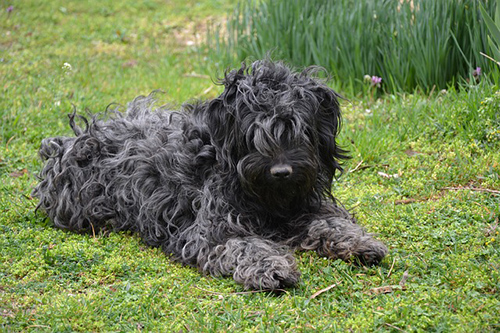
Coat types vary in this group, including copious shedders such as the Shetland Sheepdog (an infamous barker). And the Rough Collie (which many don’t realize comes in a short-haired variety, known as the Smooth Collie). However, there are some easy-care coats here and the second of the AKC’s two Hungarian corded breeds, the Puli. The Komodor is the other and is found in the Working group.
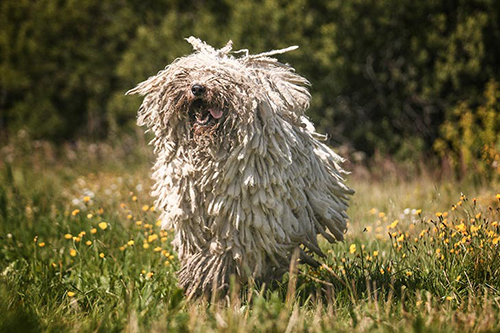
Most of the dogs in this group still demonstrate the desire to keep things in a tight and neat herd. They tend to herd children, toys, and other pets and will even try herding your friends when they come over. An Australian Shepherd once put this trait to use at a party. At the beginning of the event, the dog prodded guests slowly and subtly, working around the group until they moved unconsciously toward the middle of the yard. When they realized what the dog had done, they began laughing. Then they spread out again, which of course, annoyed the hard-working Shepherd.
Herding Breeds: A Quick Look
History
In 1983, the herding group was made up of dogs removed from the overcrowded working group and was the first new AKC group in more than 50 years.
Most popular: German Shepherd.
Least favored: Canaan Dog.
Small to medium breeds (15 to 20 pounds) are Bearded Collie, Australian Cattle Dog, Canaan Dog, Border Collie, Pembroke Welsh Corgi, Cardigan Welsh Corgi, Shetland Sheepdog, Puli.
Large breeds (50 to 80 pounds) are Belgian Malinois, Australian Shepherd, Belgian Sheepdog, Bouvier des Flanders, Belgian Tervuren, Briard, German Shepherd Dog, Smooth Collie, Rough Collie, Old English Sheepdog.
Activity level: These agile dogs have plenty of energy to burn
Other Types of herding dogs to Consider
Smooth Collie
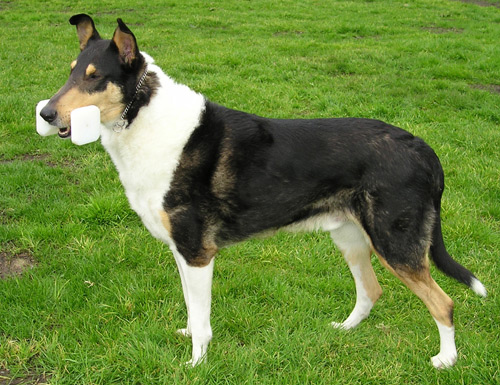
The Smooth Collie looks like a Rough Collie with a haircut. These short-haired dogs should be a lot more popular, in my opinion. Even though they’re smooth, they still shed, but nothing like their long-haired cousins. I know you wouldn’t expect your Collie to rescue children out of wells like Lassie. However, the kind Collie temperament is preserved in the Smooth Collie. Though, there are sayings that smooths are a little more reserved, which is breeder talk for timid. They are in the upper tier of the smart herding dogs.
Bearded Collie
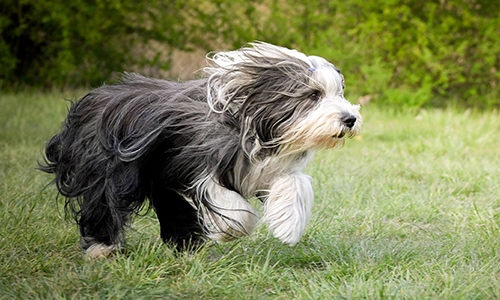
The sweet-natured, intelligent breed with the fuzzy face is usually mistaken for an Old English Sheepdog. Bearded Collie enthusiasts will most likely put the record straight, pointing out that this herding dog is one of the U.K’s oldest breeds, older than the Old English, which is not very old at all. The only negative about this breed is that their silky coats, especially plentiful on their legs, adds up to hours of dematting if you’re reckless enough to take your dog into the fields. Additionally, they tend to be a little too barky.
Welsh Corgis
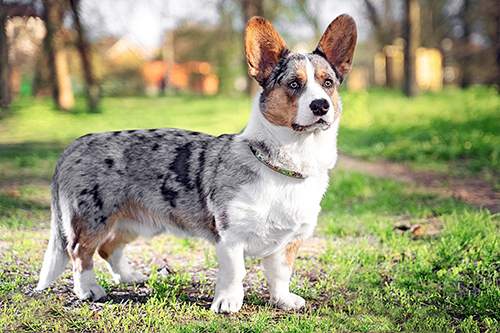
Pembrokes don’t have tails, Cardigans do, but all Corgis have attitude, and you’re going to love them for it. This dog is intelligent and highly trainable; however, they may end up training you if you’re inconsistent. These dogs are sturdy and robust enough to play with children with their short legs. Try to get more than one because few things will make you laugh faster than seeing a pack of Corgis running. Training herding dogs is not always going to be easy.
List of Herding Breeds
How active a breed can be is one of the many things to consider when choosing a dog. Other crucial things to consider are grooming demands, size, and temperament.
Many of the larger breeds are categorized as Working and Herding breeds; however, some Hounds are large as well. Dogs in the Toy Group are on the smaller end, but you will also find some little ones in the Non-Sporting Group as well.
The Hound Breeds are the easiest to groom; in fact, any small short-haired breed would usually be low maintenance. Personalities differ significantly from group to group, from breed to breed, and from dog to dog.
Though a dog’s personality is predictable in most breeds, observations are not always accommodating. For instance, you can come across a high-strung Saluki or Bulldog as readily as you can find an easygoing Border Collie or Brittany.
